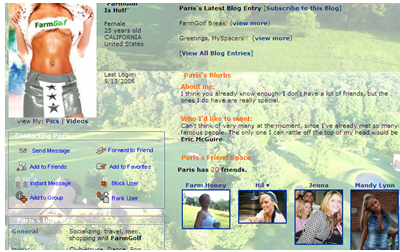Social networks in transition

DemoFall 2006 has its share of social networking startups this year, as it has in years past. One difference from past convocations of the digerati is that the realm of social networking is dominated by MySpace and Facebook--at least for the 15-to-25-year-old crowd. But different demographics, and the inevitable aging process and evolution of individual preferences merit different approaches to social networks.
MySpace has the most active audience of social networkers, and feels like semi-controlled chaos. According to Hitwise data, MySpace garnered nearly 5 percent of Web site visits in August, which gives a good indication of who is spending the most time online.

eSnips, at the other end of the spectrum, bills itself as a 'social sharing,' rather than networking, site, where users can upload, create and share any kind of content from a single location and a consistent interface. The demographic skews older than MySpace, which also means that the audience is less prone to have grown up in a digital world, and requires a less cluttered, more well lighted space. It is a walled garden, but it also doesn't require that users learn the idiosyncracies of multiple sites to represent their interests and relationships on line, or engage in commerce. It's a social sharing site and network for mere mortals, which currently numbers about 1 million for eSnips, according to company CEO Yael Elish. MySpace may have 100 times that number of users.
Wallop, which debuted at DemoFall 2006, is attempting to change the social networking landscape with a fresh approach to the user experience. Wallop is trying to attract users in the MySpace/Facebook demongraphic by providing a Flash-based service that has lots of eye candy. In addition, the well funded spin out from Microsoft is taking a page from Second Life, trying to make money by sharing in the revenue from the sale of "Mods," Flash-based content, such as widgets, that users can add to their page. Rafe Needleman gives his initial impression of Wallop here.